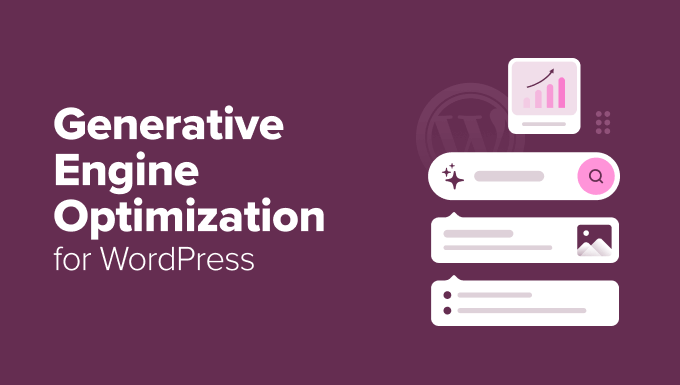I recall the first time one of my articles ranked in the top 3 search results, but Google’s AI Overview credited someone else.
The frustrating part? The information was straight from my post. 😒
That experience was eye-opening. So, I spent months studying how AI search tools like Google’s AI Overview, ChatGPT, Gemini, and Claude gather information.
I experimented with various formats, structured data settings, and optimization strategies across multiple WordPress sites.
In this guide, I’ll explain what Generative Engine Optimization (GEO) means for WordPress users. You’ll discover how it functions, how it differs from traditional SEO, and specific steps to make your content appear in AI answers — even if you’re not tech-savvy.
If you’re worried about losing traffic or falling behind, you’re not alone. I’ve felt that frustration, too. That’s why I created this guide: to help you adapt more quickly and with less stress.
What Is Generative Engine Optimization? (And Why It Matters for WordPress)
Generative Engine Optimization (GEO) involves structuring your content so AI tools like ChatGPT, Google’s AI Overview, Claude, and Gemini can easily understand, summarize, and include it in their answers.
These AI tools don’t just scrape the web. They look for structure, clarity, and relevance. If your content is well-formatted, direct, and easy for language models to process, it’s more likely to be included in AI-generated answers.
Think of it like SEO, but instead of optimizing for search engine bots, you’re optimizing for AI models trained on vast amounts of text.
GEO doesn’t replace traditional SEO. It builds on it by focusing on how modern AI tools interpret and reuse information.
AI Search Is Already Here (And It’s Eating Your Traffic)
When Google first launched AI results, I thought they wouldn’t have much impact. But I was wrong. Sometimes, the summary used my content, but no one clicked through to my site.
I’m not the only one who noticed this.
A recent Ahrefs study analyzed 300,000 keywords and found that when Google displayed an AI Overview, the top-ranking page saw a 34.5% drop in average clickthrough rate compared to similar results without AI.
AI tools are changing how people get answers. They often pull responses directly from existing content, and many users don’t need to click past the summary.
In a recent interview, Cloudflare CEO Matthew Prince shared: “Today, 75 percent of queries get answered without you leaving Google.”
If your site isn’t included in that AI-generated answer, you’re missing out on visibility and potential traffic, even if you’re still ranking high in traditional search results.
The good news is WordPress equips you to adapt. With WordPress SEO plugins like All in One SEO, clear formatting, and structured content, you can prepare your site for both traditional rankings and AI search results.
That’s what helped me get my posts noticed again, and it can help you, too.
GEO vs SEO: What’s Different, What’s the Same?
SEO and GEO often overlap, but they have different goals. Traditional SEO helps your site rank in search results, while GEO helps your content get included in AI-generated answers.
With SEO, you’re optimizing for search engine bots that index and rank pages. With GEO, you’re optimizing for AI tools that summarize and generate answers. Both are important, but they reward different strategies.
Here’s a quick comparison of how SEO and GEO compare:
SEO: Focuses on ranking in search engine results pages (SERPs)
GEO: Focuses on being included in AI summaries and direct answers
SEO: Targets keywords, search intent, and backlinks
GEO: Targets clarity, structure, and prompt-friendly content
SEO: Requires strong metadata, title tags, and alt text
GEO: Requires schema markup, author info, and summary blocks
SEO: Optimizes for clicks from listings
GEO: Optimizes for being quoted or paraphrased by AI tools
SEO: Relies on content length, keyword density, and readability
GEO: Relies on short answers, definitions, and machine-parsable formatting
In simple terms, SEO helps people find you. GEO helps machines understand and use your content when answering someone’s question. To stay visible, you’ll want to do both.
How AI Search Works Behind the Scenes
To optimize for AI search, it helps to understand how these tools work behind the scenes.
While each platform is different, they tend to follow similar patterns when deciding what content to summarize, cite, or ignore.
How Google AI Overviews Choose What to Display
Google isn’t guessing when it builds an AI Overview. It looks for content that’s clear, well-structured, and trustworthy.
From what I’ve observed, the following factors can increase your chances of being included:
Pages that already rank well organically, but not always






